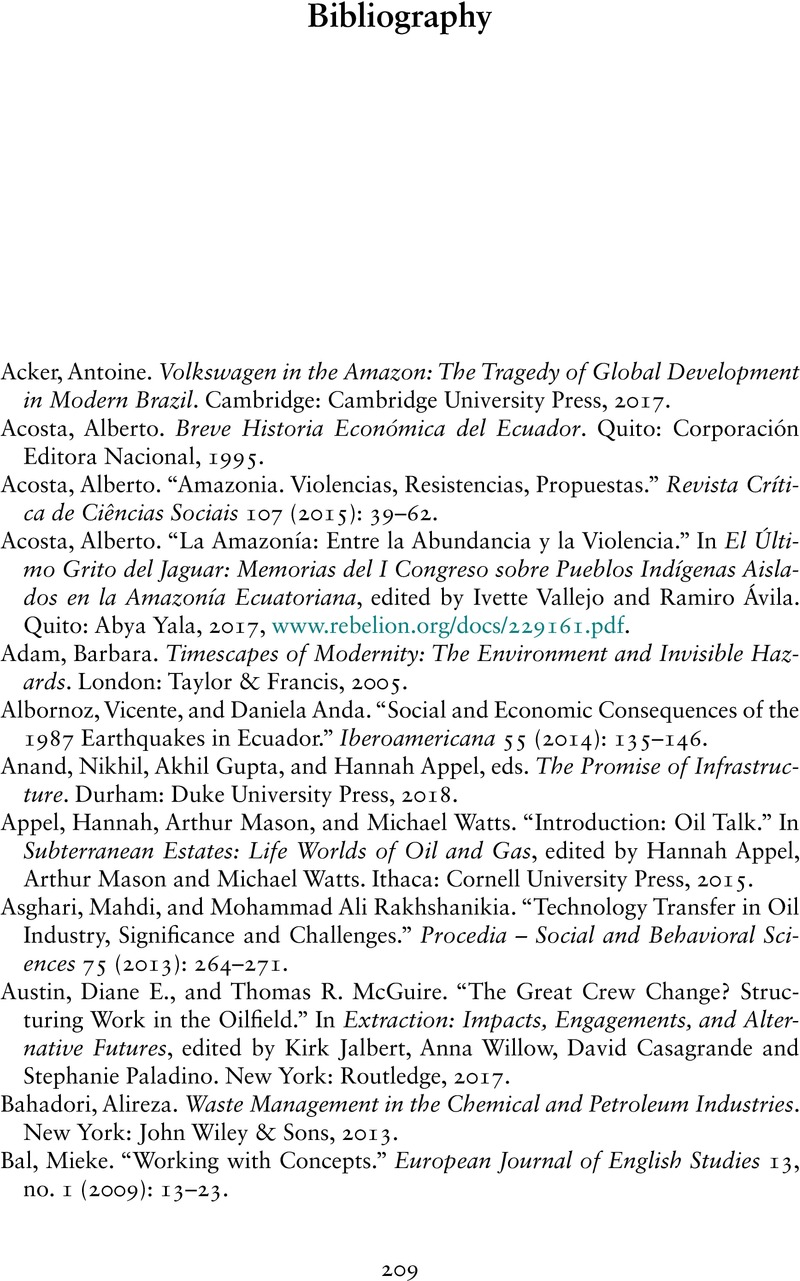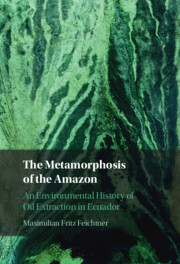Book contents
- The Metamorphosis of the Amazon
- The Metamorphosis of the Amazon
- Copyright page
- Dedication
- Contents
- Figures
- Maps
- A Poem as Preamble: Healing Together
- Acknowledgments
- Abbreviations
- 1 Introduction
- 2 Hidden Treasures
- 3 A Resource Environment
- 4 Oily Roads
- 5 Ghost Acres
- 6 A Tough Life
- 7 The Legal Aftermath
- Archives Consulted
- Bibliography
- Index
- References
Bibliography
Published online by Cambridge University Press: 13 December 2023
- The Metamorphosis of the Amazon
- The Metamorphosis of the Amazon
- Copyright page
- Dedication
- Contents
- Figures
- Maps
- A Poem as Preamble: Healing Together
- Acknowledgments
- Abbreviations
- 1 Introduction
- 2 Hidden Treasures
- 3 A Resource Environment
- 4 Oily Roads
- 5 Ghost Acres
- 6 A Tough Life
- 7 The Legal Aftermath
- Archives Consulted
- Bibliography
- Index
- References
Summary

- Type
- Chapter
- Information
- The Metamorphosis of the AmazonAn Environmental History of Oil Extraction in Ecuador, pp. 209 - 226Publisher: Cambridge University PressPrint publication year: 2023



